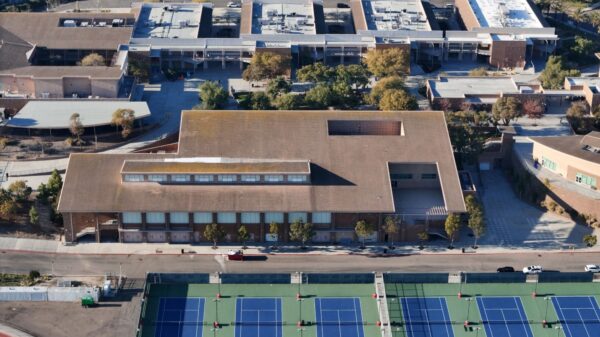The age of the Moon has been determined through a method known as crater counting, a technique that compares the number of impact craters across its surface. This process is crucial for understanding not just the Moon, but also other celestial bodies such as Mercury and various moons in our solar system. As astronomers delve into the Moon’s past, they are piecing together a timeline that reveals its geological history.
Understanding Crater Counting
Astronomers employ crater counting because many celestial objects, including the Moon, have been geologically inactive for extensive periods. When an asteroid or comet collides with these surfaces, it creates craters that remain intact due to the lack of atmosphere, water, and tectonic activity to erode or cover them. Over time, craters accumulate, providing a record of impacts that can be analyzed.
The Moon features distinct regions, such as the dark basins known as maria and the lighter highlands. By examining the density of craters in these areas, scientists can infer their relative ages. For instance, the maria, which have fewer craters, are younger than the heavily cratered highlands. However, to determine absolute ages in billions of years, researchers turn to samples collected during the Apollo missions.
Insights from Apollo Missions
The Apollo missions, particularly those that returned lunar rocks, have allowed scientists to apply radiometric dating. This method measures the concentrations of radioactive elements and their decay products, enabling precise age calculations. For example, the edge of the Sea of Tranquility, where the Apollo 11 mission landed, is estimated to be over 3.5 billion years old. Certain areas in the highlands are even older, dating back to nearly 4 billion years.
Among the youngest features on the Moon are large impact craters such as Copernicus and Tycho, both of which are less than 1 billion years old. The youngest crater, the Giordano Bruno crater, is approximately 4 million years old. These younger craters are significant because their impacts are powerful enough to obliterate surrounding features, essentially resetting the geological clock in those locations.
With these absolute ages established, researchers can calibrate crater counts on other celestial bodies, such as Mercury and Callisto, even without direct exploration. The findings from the Apollo missions have greatly expanded our understanding of the solar system’s geological history.
Moon’s Orbital Changes
In addition to determining the Moon’s age, the Apollo missions led to revelations about its gradual separation from Earth. This phenomenon was first hypothesized in the early 1800s by Sir Edmund Halley, who analyzed ancient eclipse records. Though the mechanisms were understood—specifically, the gravitational influences of Earth’s tides—the precise rate of the Moon’s retreat remained unclear.
In 1962, Princeton graduate student James Faller proposed the deployment of reflectors on the Moon’s surface. This innovation allowed for more accurate measurements by bouncing lasers between the Earth and the Moon. Current data indicates that the Moon is receding at an average rate of 3.8 centimeters per year. While this may seem slow, over millions of years, the cumulative effect will render total solar eclipses impossible as the Moon continues to drift further away.
As our understanding of the Moon’s age and its changing orbit evolves, it becomes increasingly evident that our relationship with this celestial body is dynamic. The data gathered from the Apollo missions not only sheds light on the Moon’s past but also provides a glimpse into its future, urging us to appreciate the beauty of total solar eclipses while they are still a part of our sky.







































































